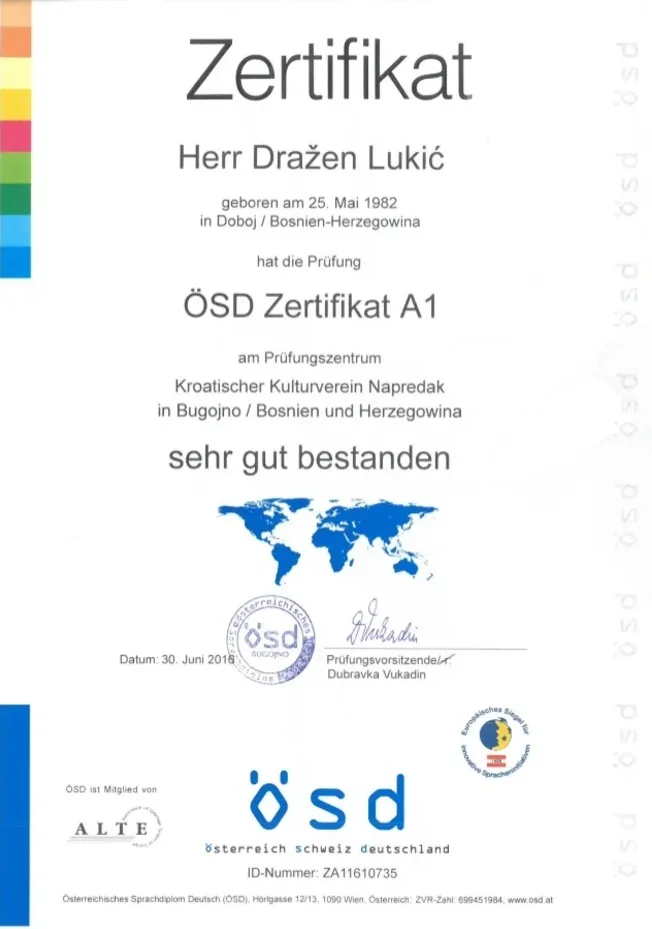Understanding the German as a Foreign Language Exam
Discovering a brand-new language opens doors to numerous opportunities, both personal and professional. Amongst the myriad of languages spoken globally, German stick out as a necessary language, especially in the context of Europe. With over 90 million native speakers and growing economies in Germany, Austria, and Switzerland, proficiency in German can supply substantial advantages. For non-native speakers wanting to validate their German language abilities, the German as a Foreign Language exam works as a vital credential.
Overview of the German as a Foreign Language Exam
The German as a Foreign Language exam, commonly described as TestDaF (Test Deutsch als Fremdsprache), is a worldwide acknowledged efficiency test created for non-native speakers. It assesses individuals' reading, writing, listening, and speaking capabilities in German. The examination is an important stepping stone for those seeking to study or work in German-speaking countries, as it assists in determining the candidate's ability to utilize German in academic, professional, and daily contexts.
Who Can Take the Exam?
While anybody can take the TestDaF regardless of age, it is mostly focused on:
Trainees wishing to look for universities in Germany or other German-speaking countries.
Professionals seeking to enhance their profession prospects in German-speaking regions.
Immigrants seeking citizenship or irreversible residency in Germany, Austria, or Switzerland.
Levels of Proficiency
The TestDaF examines prospects throughout four key parts which line up with the Common European Framework of Reference for Languages (CEFR). It is segmented into the following levels:
TDN 3: Intermediate level, appropriate for many university courses.
TDN 4: Upper intermediate level, frequently needed for scholastic programs that require strong language skills.
TDN 5: Advanced level, anticipated for extremely specialized research studies or expert operate in German-speaking environments.
Exam Structure
The structure of the TestDaF consists of four sub-tests, which jointly take roughly 3.5 hours to finish. Here's what candidates can expect:
Listening Comprehension (40 minutes):.
Audio recordings connected to daily situations and scholastic situations.
Prospects address concerns based upon the product.
Checking Out Comprehension (60 minutes):.
Texts from numerous fields like literature, social sciences, and lives sciences.
Concerns evaluate understanding of the main point and comprehensive details.
Written ösd a1 (60 minutes):.
A composing job, frequently including the analysis of a given subject or text.
Prospects should show clarity, coherence, and appropriate design.
Spoken Expression (30 minutes):.
An interactive speaking test conducted with an inspector.
Candidates are evaluated on their ability to participate in conversations, offer discussions, and react to concerns.
Getting ready for the TestDaF.
Preparation for the TestDaF is critical, as it gives prospects the very best chance to prosper. Here are some methods and resources to consider:.
Research Study Various Resources.

Language Courses: Enroll in extensive German language courses tailored for TestDaF preparation.
Online Resources: Utilize platforms like Duolingo, Babbel, or Goethe Institute's online offerings.
TestDaF-specific materials: Acquire practice tests from the TestDaF official website or language book shops.
Practice Regularly.
Speaking: Engage in discussion clubs or partner with language exchange partners.
Composing: Practice composing essays and letters in German, seeking feedback from native speakers or instructors.
Listening and Reading: Immerse yourself in German media by watching movies, listening to podcasts, and checking out newspapers.
Mock Exams.
Taking mock tests under timed conditions can assist acquaint prospects with the test structure and improve time management skills. Organizations regularly offer practice examinations to help students in assessing their preparedness.
Value of the Exam.
The significance of the TestDaF extends beyond mere academic recognition. Here are several reasons why taking this exam is rewarding:.
University Admissions: Many German universities need a particular TestDaF score for admission to programs taught in German.
Profession Opportunities: Proficiency across the four language abilities can improve employability in multinational companies or organizations in German-speaking regions.
Cultural Engagement: Mastery of the language allows deeper connections with German culture, literature, and history.
Migration: Proficiency in German might be essential for residency licenses or permanent residency applications.
FAQs.
What score do I require to pass the TestDaF?
There is no universal pass mark; it varies by institution. Typically, a rating of TDN 4 agrees with for university admissions.
How typically can I take the TestDaF?
You can take the TestDaF several times. Nevertheless, it is ideal to allow adequate time for improvement in your language abilities before reattempting the test.
For how long are the results legitimate?
TestDaF results are normally legitimate for two years. It is suggested to check the particular requirements of the institution or company you are using to.
Where can I take the TestDaF?
The evaluation is available at various screening centers worldwide. The official TestDaF website provides a locator tool for finding nearby screening centers.
Exists a particular age limit for taking the TestDaF?
There is no age limit for taking the TestDaF. Whether a teen or an adult, anybody interested in proving their German language abilities can register for the exam.
Conclusion.
The German as a Foreign Language exam is a crucial element for anybody wanting to study, work, or immerse themselves in German-speaking societies. With devoted preparation and the ideal resources, candidates can browse the exam efficiently and showcase their efficiency in the German language, opening many chances in education and career paths. Welcoming the difficulty of learning German not just results in scholastic or expert improvements but also enhances individual viewpoints through the understanding of a new culture.
